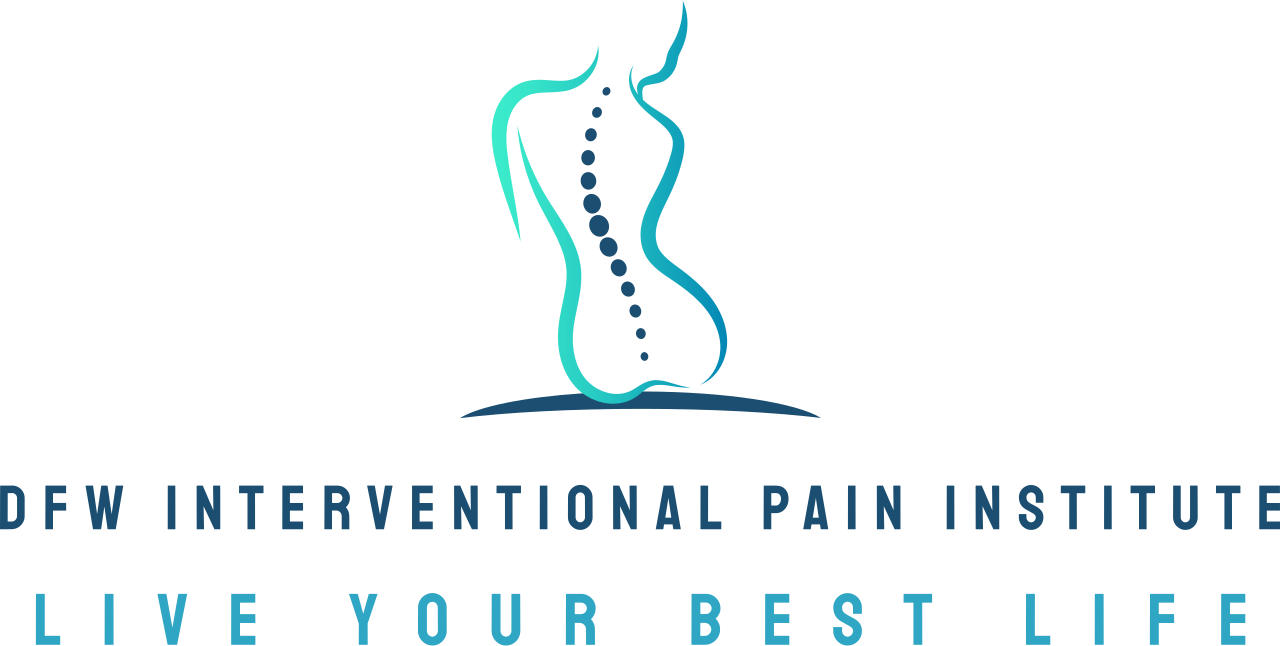What does it mean if you’re experiencing chronic pain in your feet
Chronic foot pain affects millions of people worldwide, yet many dismiss it as a normal part of aging or an unavoidable consequence of being on their feet all day. The truth is, persistent foot pain lasting six months or more often signals underlying health issues that deserve attention and treatment. Understanding what your chronic foot pain means—and taking action to address it—can significantly improve your quality of life and prevent more serious complications down the road. This blog post will help you understand chronic foot pain, what you can do about it and when to see a specialist like Dr. Edrick Lopez here at DFW Interventional Pain Institute.
Common causes of chronic foot pain
Chronic foot pain rarely appears without reason. Several conditions commonly contribute to persistent discomfort in the feet, each with distinct characteristics and treatment approaches.
Plantar fasciitis
Plantar fasciitis is one of the most frequent causes of chronic foot pain. This condition occurs when the thick band of tissue connecting your heel bone to your toes becomes inflamed or torn. The pain typically feels sharp and stabbing, especially during your first steps in the morning or after periods of rest.
Achilles tendinitis
The Achilles tendon connects your calf muscles to your heel bone. When this tendon becomes inflamed through overuse or injury, it can cause persistent pain along the back of your foot and lower leg. This condition is particularly common among runners and people who suddenly increase their activity levels.
Morton's neuroma
Morton's neuroma involves a thickening of tissue around the nerves leading to your toes, usually between the third and fourth toes. This condition can cause burning pain, numbness, or the sensation of having a pebble in your shoe.
Arthritis
Both osteoarthritis and rheumatoid arthritis can affect the joints in your feet, causing pain, stiffness and reduced mobility. Osteoarthritis typically develops from wear and tear over time, while rheumatoid arthritis is an autoimmune condition that can affect multiple joints simultaneously. You can read about dietary changes that help manage pain for added support in controlling arthritis symptoms.
Peripheral neuropathy
Peripheral neuropathy occurs when nerves in your feet become damaged, often due to diabetes, vitamin deficiencies or other medical conditions. This can cause burning, tingling, or numbness in your feet, along with sharp, shooting pains.
Risk factors that contribute to foot pain
Understanding the factors that increase your risk of developing chronic foot pain can help you take preventive steps and make informed decisions about your care.
Improper footwear
Wearing shoes that don't fit properly or lack adequate support can put excessive stress on your feet. High heels, flip-flops and worn-out sneakers are common culprits that can contribute to foot pain over time.
High-impact activities
Running, jumping and other high-impact activities can place significant stress on your feet and ankles. Without proper conditioning and recovery time, these activities can lead to overuse injuries and chronic pain.
Obesity
Carrying extra weight puts additional pressure on your feet with every step. This increased load can accelerate wear and tear on joints and contribute to conditions like plantar fasciitis and arthritis.
Foot structure abnormalities
Flat feet, high arches, and other structural irregularities can alter the way you walk and distribute weight across your feet. These variations can lead to increased stress on certain areas and contribute to chronic pain.
Symptoms that signal it's time to seek help
Chronic foot pain presents itself in various ways, and recognizing these symptoms can help you determine when professional treatment is necessary.
Persistent aching or stiffness
If your feet consistently ache or feel stiff, especially after periods of rest or in the morning, this may indicate an underlying condition that requires attention.
Sharp, shooting pain
Sudden, intense pain that shoots through your foot can signal nerve involvement or specific injuries that need professional evaluation.
Numbness or tingling
These sensations often indicate nerve problems that can worsen without proper treatment. Numbness and tingling shouldn't be ignored, as they can lead to more serious complications.
Swelling and inflammation
Persistent swelling in your feet or ankles, particularly when accompanied by warmth and redness, can indicate inflammation or infection that requires medical attention.
Limited range of motion
If you notice that you can't move your feet or ankles through their normal range of motion, this restriction may indicate joint problems or tendon issues that need professional care.
When to seek professional help from a pain management doctor
Recognizing when your foot pain requires professional attention is crucial for preventing complications and getting effective treatment.
You should consider consulting a pain management specialist when you experience pain that persists despite home treatments like rest, ice, and over-the-counter pain relievers. Additionally, seek help if you have difficulty walking or bearing weight on your foot, as this can indicate a more serious underlying condition.
Signs of infection, such as redness, warmth or pus around the affected area, require immediate medical attention. Similarly, if you experience loss of sensation in your foot or notice changes in your foot's shape or structure, these symptoms warrant professional evaluation.
The diagnostic process
When you visit a pain management specialist like Dr. Edrick Lopez for chronic foot pain, they'll typically begin with a comprehensive medical history and physical examination. This process helps identify potential causes and guides further testing.
Your doctor may order imaging tests such as X-rays to check for fractures or arthritis, MRI scans to evaluate soft tissues like tendons and ligaments, or ultrasound to examine blood flow and soft tissue structures.
In some cases, nerve conduction studies may be necessary to assess nerve function and identify conditions like peripheral neuropathy.
Treatment options for chronic foot pain
The good news is that many effective treatments are available for chronic foot pain, ranging from conservative approaches to more advanced interventions.
Conservative treatments
Conservative treatments often serve as the first line of defense against chronic foot pain. The RICE method—rest, ice, compression, and elevation—can help reduce inflammation and provide relief for many conditions.
Over-the-counter pain relievers like ibuprofen or acetaminophen can help manage pain and reduce inflammation. Stretching and strengthening exercises targeted at your feet and lower legs can improve flexibility and reduce pain over time.
Custom orthotics or shoe inserts can help correct biomechanical issues and provide better support for your feet during daily activities.
Medical treatments
When conservative treatments aren't sufficient, medical interventions may be necessary. Physical therapy can help strengthen muscles, improve flexibility and teach you proper movement patterns to reduce stress on your feet.
Corticosteroid injections can provide targeted relief for inflammatory conditions, while nerve blocks can help manage pain from nerve-related issues. For certain conditions, medications specifically designed for neuropathic pain may be prescribed.
Surgical interventions
Surgery is typically considered only when other treatments have failed to provide adequate relief. The type of surgical procedure depends on the underlying condition causing your foot pain.
Common procedures include plantar fascia release for severe plantar fasciitis, tendon repair for Achilles tendinitis and joint fusion or replacement for severe arthritis.
Prevention strategies
Taking proactive steps to prevent chronic foot pain can save you significant discomfort and help maintain your mobility and quality of life.
Proper footwear
Investing in well-fitting, supportive shoes is one of the most important steps you can take. Choose shoes that provide adequate arch support, cushioning, and room for your toes to move freely.
Regular stretching and exercise
Maintaining flexibility and strength in your feet and lower legs can help prevent many common foot problems. Simple exercises like calf stretches, toe curls and ankle rolls can make a significant difference.
Weight management
Maintaining a healthy weight reduces the stress on your feet and can help prevent conditions like plantar fasciitis and arthritis from developing or worsening.
Activity modification
If you participate in high-impact activities, ensure you're using proper techniques and allowing adequate recovery time. Gradually increase activity levels rather than making sudden changes.
Custom orthotics
For people with structural foot problems, custom orthotics can provide the support needed to prevent pain and complications.
How a pain management specialist can help
A pain management specialist like Dr. Lopez here at DFW Interventional Pain Institute brings specialized expertise to the treatment of chronic foot pain. These specialists conduct comprehensive evaluations to identify the root cause of your pain and develop tailored treatment plans that address your specific needs and lifestyle.
Pain management specialists have access to advanced therapies and procedures that may not be available through other healthcare providers. They can also provide long-term management strategies to help you maintain relief and prevent future problems.
DFW Interventional Pain Institute can get you back on your feet
Chronic foot pain doesn't have to control your life. With proper evaluation, treatment and ongoing care, most people can find significant relief and return to their normal activities. The key is recognizing that persistent pain is not something you have to live with and taking action to address it.
At DFW Interventional Pain Institute, Dr. Lopez and his team are committed to helping you find lasting relief from chronic foot pain. Through comprehensive evaluation and personalized treatment plans, we can help you get back to living your best life. Don't let foot pain hold you back any longer—contact us today to schedule a consultation and take the first step toward relief.

